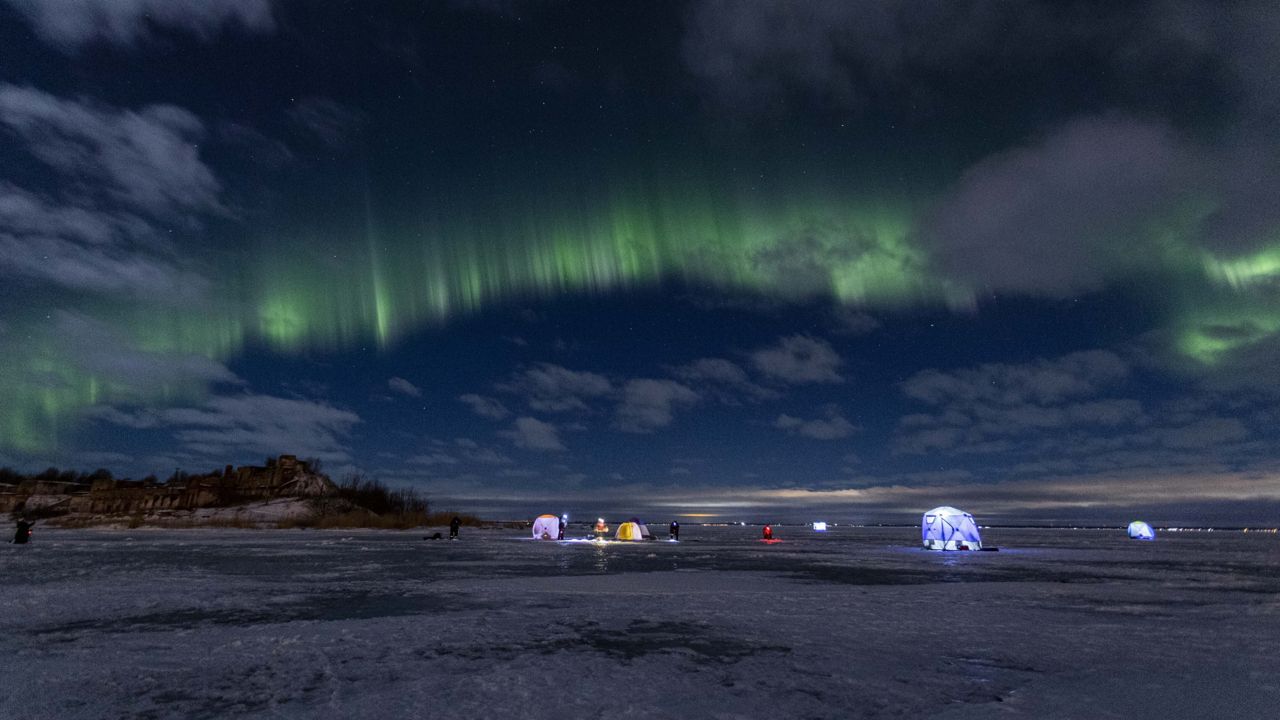The Northern Lights – a dizzying array of curtained lights also known as the aurora borealis – can usually be seen near the Arctic Circle in places like Alaska, Canada, Iceland, Finland and even Russia.
But this week, thanks to a spike in sun storms on August 14, individuals living in the mainland United States might get a chance to see the spacial light show.
That’s because the National Oceanic and Atmospheric Administration issued a level 3 geomagnetic storm watch for August 18, caused by significant coronal mass ejections from the sun. A coronal mass ejection, or CME, occurs when a large amount of plasma is ejected from the sun and can cause – depending on its strength – temporary changes to the Earth’s magnetosphere.
The Northern Lights, and all other auroras seen on Earth, are caused by these disturbances in the magnetosphere, and can shift both location, light color and duration depending on the type of geomagnetic storm occurring at the time. A June 2021 paper published in the journal Nature Communications, confirmed that the aurora borealis can be seen when solar wind particles pull on the Earth’s magnetic field, creating undulations that appear as bright lights in the sky.
“High-energy particles precipitating down along the Earth’s dipolar magnetic field into the auroral ionosphere collisionally excite atoms and molecules, leading to the auroral emissions with a variety of appearances, from bright discrete arcs, to faint arcs, to diffuse aurora,” the paper’s authors wrote in part.
The stronger the storm, the more widespread sightings of the aurora might be – and the advisory for Thursday sits at a level 3 out of 5.
The storm might have the potential to “drive the aurora further away from its normal polar residence, and if other factors come together, the aurora might be seen over portions of Pennsylvania, Iowa, to northern Oregon,” NOAA wrote in part.
Some of the major cities that may be able to view the Northern Lights include Seattle, New York, Philadelphia, Chicago and Boston – though NOAA advises that clear skies free of light pollution offer the best chance to view the aurora.
The agency has several other recommendations for aurora enthusiasts:
Go to a location at night with limited light pollution
Go to a location with a higher magnetic latitude
Clouds, rain and other precipitation can impact viewing
While Wednesday night offered the best viewing conditions for the lights, Thursday between 9:30 p.m. EST and 4:30 a.m. EST Friday.
Some images of the light show were captured in Minnesota and Washington on Wednesday, and the Geophysical Institute at the University of Alaska Fairbanks predicted continued “highly active” lights through tonight.
"Weather permitting, highly active auroral displays will be visible overhead from Inuvik, Yellowknife, Rankin and Iqaluit, to Portland OR, Cheyenne, Lincoln, Springfield, and New York City, and visible low on the horizon as far south as Carson City, Oklahoma City, and Raleigh," the institute wrote in a statement earlier this week.
This is hardly the first time an electromagnetic storm has caused a change in Earthly auroras. Last fall, the sun launched what is called an “X-class solar flare” that was strong enough to spark a high-frequency radio blackout across parts of South America.
The shimmering waves, glowing pillars, or writhing snakes of green, red or violet light seen in an aurora borealis display can cause coyotes to howl and loons to scream and inspire a powerful attraction for some humans.
Aurora Borealis chasers say the lights typically are seen around midnight or later, meaning that dedicated hunters often spend a lot of time standing alone, outside in the middle of the night in the pitch black back of beyond, staring at the sky.
An aurora borealis sighting might be compared to experiencing a solar eclipse. Except that a total solar eclipse, though much rarer than the aurora borealis, is completely predictable. Caused by the clockwork movements of the moon, sun and Earth, we know exactly when, where and how long an eclipse will occur. The aurora borealis is generated by solar winds and storms, sunspots and coronal holes. Those are tracked by the National Oceanic and Atmospheric Administration’s (NOAA) Space Weather Prediction Center, but the predictions can be iffier than weather forecasts.
The Associated Press contributed to this report.



